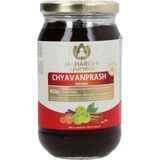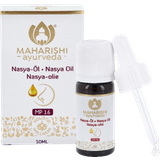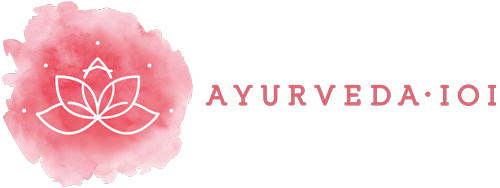Ayurveda vs TCM
Similarities and Differences
Traditional Chinese Medicine (TCM for short) originates in China, while Ayurveda originates in India. Both practices are thousands of years old and consider mind and body as one inseparable unit. The holistic concept is thus common to both traditions.
What is TCM?
TCM is based on the triad of yin, yang and qi. Yin and yang are often interpreted as opposites in nature, for example as the feminine vs. the masculine. Every function in the body and every disease has a yin and yang. This concept follows five principles:
- Everything has two sides.
- Every yin and yang can be broken down into a yin and a yang.
- Yin and yang cannot be divided, they are mutually dependent.
- Yin and yang also control each other.
- Yin and yang transform into one another, they merge into one another.
The dynamic relationship between yin and yang is vital to health. The Qi stands for the life energy that flows in channels through the entire body. If the Qi cannot flow unhindered through the 12 main and numerous secondary meridians, this is referred to as a blockage. Massages, acupuncture and nutrition play a major role.
Similarities with Ayurveda
The three Doshas (or constitution types) Vata, Pitta and Kapha only exist in Ayurvedic teachings. They are made up of the five elements water, earth, air, fire and space and determine our constitutional type depending on the dominating elements. These energies are not differentiated in TCM
Both doctrines have common ideas when it comes to nutrition. In TCM, nutrition is based on the 5-element theory, the doshas are of paramount importance in Ayurveda. However, both teachings have the following points in common:
- Eat local and seasonal foods.
- Eat warm instead of cold meals.
- A combination of all flavours is recommended.
The power comes from the centre
Both schools of thought advise avoiding extremes. Diet, lifestyle and spirit should all follow the noble middle path. This centre is formed in the body by the stomach, spleen and food. In Ayurveda, the digestive fire of the gastrointestinal tract is referred to as Agni.
Conclusion
TCM and Ayurveda are based on regional and timeless traditions. They follow the laws of nature. Although they are thousands of years old, they have never lost their topicality. We can learn a lot from both systems and, in certain respects, combine them and enjoy the benefits of both worlds.
Latest reviews
-
 4.8 (4)
4.8 (4)Maharishi Ayurveda MA 1010 - Ama-Clean, 60 Tablets
- Bitter and herbal
- For the changing seasons
£27.50 (£916.67 / kg)Delivery by April 29
-
 5.0 (2)
5.0 (2)Maharishi Ayurveda MA 3 Rasayana for Seniors, 100 Tablets
- Carefully selected blend of herbs
- Based on an original recipe
- Balances Vata
£25.50 (£510.00 / kg)Delivery by April 29
-
 5.0 (22)
5.0 (22)Maharishi Ayurveda Chyavanprash, 450 g
Bestseller- 100% natural
- With herbs, fruits & spices
- Combines 5 flavours
£29.00 (£64.44 / kg)Delivery by April 29
-
 4.9 (18)
4.9 (18)Maharishi Ayurveda MP 16 Nasya Oil, 10 ml
Bestseller- Based on sesame oil
- Combination of herbs, oils & spices
- Suitable for daily use
£10.10 (£1,010.00 / l)Delivery by April 29
Magazine Articles:
-
Great Britain: Free standard delivery from £59.90
-
Free
returns More than 5.750 products
Secure payments
with SSL encryption technology



